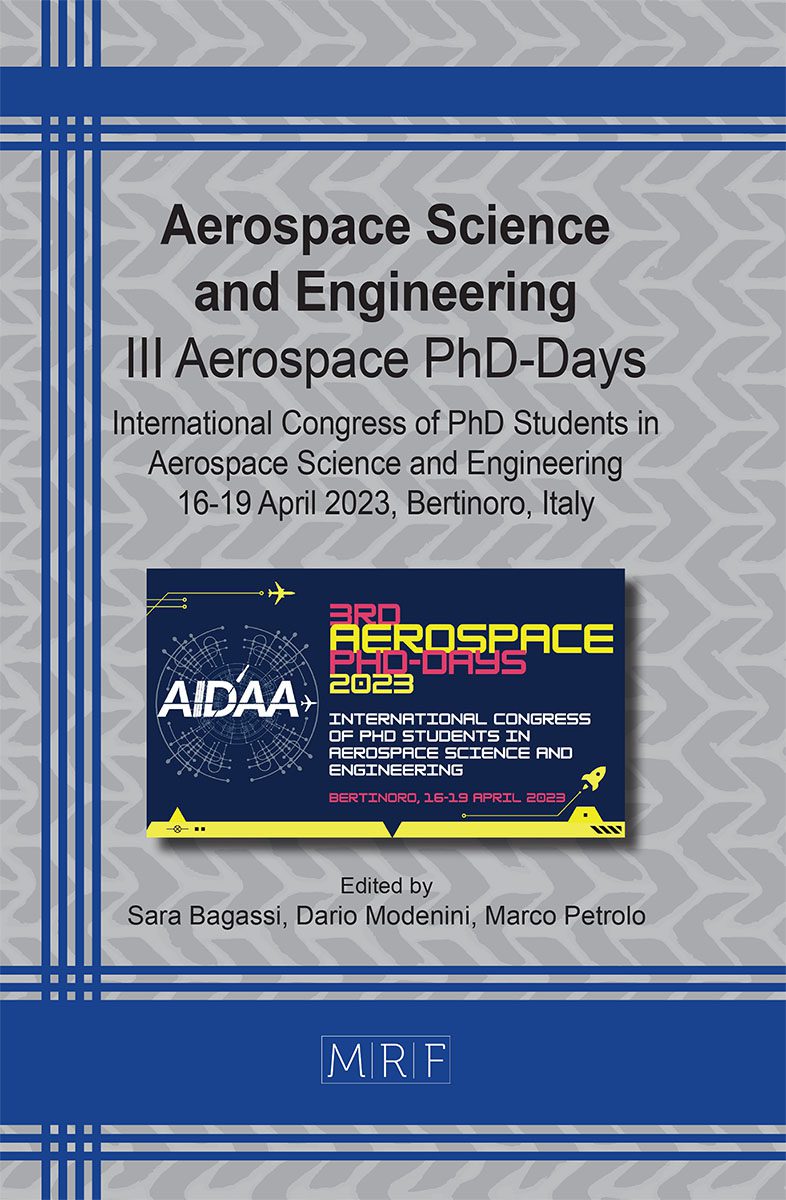Freeform Offner spectrometer for space applications
Doria Chiara, Guerri Irene, Pekala Grzegorz, Cremonese Gabriele, Naletto Giampiero, Taiti Alessio
download PDFAbstract. The performance in terms of image quality and spatial resolution plays a key role for imaging space instruments. Modern advancement in manufacturing and testing introduced freeform optics to the scene. Thanks to a higher number of degrees of freedoms with respect to the classical optical surfaces, freeform technology is a great opportunity to improve the instrument performance. Here a freeform Offner spectrometer is presented: it has been studied for the PRISMA second generation (SG) instrument, which is dedicated to space application, and it is now at the design phase A at Leonardo S.p.A.
Keywords
Optics, Space Instruments, Freeform, Spectrometer, Design
Published online 9/1/2023, 5 pages
Copyright © 2023 by the author(s)
Published under license by Materials Research Forum LLC., Millersville PA, USA
Citation: Doria Chiara, Guerri Irene, Pekala Grzegorz, Cremonese Gabriele, Naletto Giampiero, Taiti Alessio, Freeform Offner spectrometer for space applications, Materials Research Proceedings, Vol. 33, pp 200-204, 2023
DOI: https://doi.org/10.21741/9781644902677-29
The article was published as article 29 of the book Aerospace Science and Engineering
![]() Content from this work may be used under the terms of the Creative Commons Attribution 3.0 license. Any further distribution of this work must maintain attribution to the author(s) and the title of the work, journal citation and DOI.
Content from this work may be used under the terms of the Creative Commons Attribution 3.0 license. Any further distribution of this work must maintain attribution to the author(s) and the title of the work, journal citation and DOI.
References
[1] 16. J. F. Ye, L. Chen, X. H. Li, Q. Yuan, and Z. S. Gao, “Review of optical freeform surface representation technique and its application,” Opt. Eng. 56, 110901 (2017)https://doi.org/10.1117/1.OE.56.11.110901
[2] C. Hou, Y. Ren, Y. Tan, Q. Xin, and Y. Zang, “Compact optical zoom camera module based on Alvarez elements,” Opt. Eng. 59, 025104 (2019)https://doi.org/10.1117/1.OE.59.2.025104
[3] V. Lakshminarayanan, and A. Fleck. “Zernike polynomials: A guide”, Journal of Modern Optics – J MOD OPTIC. 58. 1678-1678. 10.1080/09500340.2011.633763 (2011)https://doi.org/10.1080/09500340.2011.633763
[4] J. P. Rolland, M. A. Davies, T. J. Suleski, C. Evans, A. Bauer, J. C. Lambropoulos, and K. Falaggis, “Freeform optics for imaging,” Optica 8(2), 161 (2021)https://doi.org/10.1364/OPTICA.413762
[5] D. Labate, M. Ceccherini, A. Cisbani, V. De Cosmo, C. Galeazzi, L. Giunti, M. Melozzi, S. Pieraccini, and M. Stagi, “The PRISMA payload optomechanical design, a high performance instrument for a new hyperspectral mission”, Acta Astronautica, Volume 65, Issues 9-10,2009, Pages 1429-1436, ISSN 0094-5765https://doi.org/10.1016/j.actaastro.2009.03.077
[6] Z. Qin, Q. Meng, and X. Wang, “Desensitization design method of a freeform optical system based on local curve control,” Opt. Lett. 48, 179-182 (2023)https://doi.org/10.1364/OL.480641
[7] X. Liu, T. Gong, G. Jin, and J. Zhu, “Design method for assembly-insensitive freeform reflective optical systems,” Opt. Express 26, 27798-27811 (2018)https://doi.org/10.1364/OE.26.027798
[8] J. P. Rolland, M. A. Davies, T. J. Suleski, Chris Evans, A. Bauer, J. C. Lambropoulos, and K. Falaggis, “Freeform optics for imaging,” Optica 8, 161-176 (2021)https://doi.org/10.1364/OPTICA.413762












